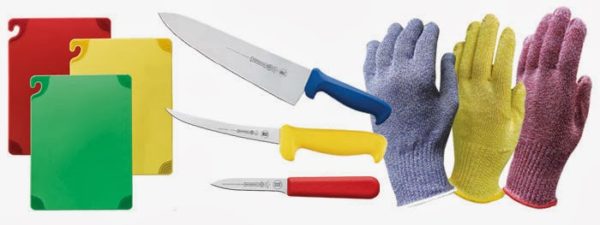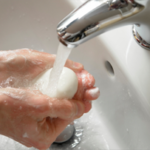
In any large commercial or industrial kitchen, the “word” no one wants to hear is cross-contamination. Cross-contamination happens when microorganisms from one object are transferred to another one. A cross-contamination incident can make people sick.
There are several ways that this can happen. All workers should know where cross contamination hazards can occur and what can be done to prevent them. Preventing cross-contamination is crucial for food safety.
Personal hygiene
 The first step comes with hygiene. Workers should always wash their hands when they come into work, when they use the restroom, and when they touch their face or hair. If a worker is moving between preparing meats and preparing vegetables, or vice versa, hands should be washed or gloves changed. The most common form of cross-contamination comes from touching raw meat and then touching another food.
The first step comes with hygiene. Workers should always wash their hands when they come into work, when they use the restroom, and when they touch their face or hair. If a worker is moving between preparing meats and preparing vegetables, or vice versa, hands should be washed or gloves changed. The most common form of cross-contamination comes from touching raw meat and then touching another food.
Hair can be another route for cross-contamination. If a worker’s hair or beard is long then it needs to be bound in a hair net or beard net to prevent hair from mingling with food.
Separate utensils
 If workers use the same tools for preparing vegetables and meats, then cutting boards and utensils become infested with bacteria that will cross to everything they touch. Restaurants with strong cross-contamination policies will use colored cutting boards to tell workers what can be cut on those surfaces. The colors of these boards can vary between kitchens, so it is important to ask what their codes are.
If workers use the same tools for preparing vegetables and meats, then cutting boards and utensils become infested with bacteria that will cross to everything they touch. Restaurants with strong cross-contamination policies will use colored cutting boards to tell workers what can be cut on those surfaces. The colors of these boards can vary between kitchens, so it is important to ask what their codes are.
There should be boards for:
- Vegetables and fruit
- Raw poultry and chicken
- Raw meat
- Raw fish
- Cooked meat
- Bakery and dairy
Dedicated knives should be used as well. You can use colored handles to match the boards. This makes it easy for others in the kitchen to know if someone is using the wrong equipment with the wrong board.
Storage
The last major place for cross-contamination is in storage. The key word for safe food storage is separation. Raw meats should be kept separate from raw vegetables. All raw food should be kept from cooked food. If something has the potential to drip onto a shelf below, move it to a lower shelf. Using food-safe containers can prevent drip hazards, and will prevent foods from touching inside of a refrigerator or freezer.
In a nutshell, foods should always be kept separate from one another, and the surfaces they touch should be kept cleaned and limited to one type of food. Workers must touch all kinds of food, so must be scrupulous in keeping themselves clean and changing gloves every time they touch another kind of food. It doesn’t take much to cause cross-contamination. Train your workers at least yearly on the hazards, and be on the lookout for violations.







![Best Crochet Hooks for Beginners and Pros [2020 Update] best crochet books](https://www.awebtoknow.com/wp-content/uploads/2018/01/best-crochet-books-100x70.jpg)